By Vince Giuliano, Melody Winnig and Michael Giuliano
How do you imagine growing old? Do you have the narrative that you dread becoming like the uncle who spent 5 years painfully wasting away with cancer? Or the mother who disappeared into Alzheimer’s years before she actually died? Or is your mental model to still teach salsa when you are in your 80’s or be like Olga, the 94 year old track star and the subject of Bruce Grierson’s book “What Makes Olga Run.”
Our social narratives are what we tell ourselves and each other. These narratives both reflect and affect how we act and think. They impact our social structures, institutions and laws. Although there are many societal forces that shape our narratives on aging, we have some choice about how we hold our own aging and the aging of the society we live in. Currently, as more people globally are living longer, there is an accompanying shift in the narrative about aging and what we, as individuals and as a society can do to prepare for that shift.
This blog entry is the first in a three-part series on the shifting narrative of aging. Here in Part 1, we start by laying out the main issues confronting the world that are associated with increasingly aging populations. We do this by reviewing landmark UN and US government studies offering a global perspective on population aging. In Part 2. we go on to list a number of the contrasting narratives related to aging which we believe to be in flux. And we mention some of the roles they play, even subliminally. In the Part 3 blog entry, we will identify some of the large number of initiatives and activities that are reflecting and driving the changes in narratives. In each of the blog entries we look at aging from individual and from social perspectives. We also surface some of the needs and requirements for the effective transformation of societies to ones in which people are living a lot longer.
Major points covered in the three blog entries are:
- Because lifetimes are growing longer and longer as a significant worldwide trend, world populations are undergoing very significant shifts. For example, in the period from 1950 to 2050 the world population of people 65 and above is going up from 5% to 16% and during the same interval the population of people five and under is going down from 14% to 6% These shifts are laid out in important government reports which are summarized in Part 1.
- As a correlated worldwide trend, many of the key narratives related to aging are in transition, older ones giving way to newer ones. (In Part 2)
- In response to the changing realities connected with aging and the evolving narratives, powerful traditional organizations are adopting new initiatives and new programs, and many new organizations are being formed on every level from the highly local to the international to respond to the new narratives. (In Part 3)
- One narrative undergoing profound change is that retirement is an end-of-life event. The newer narrative is that retirement is a late midlife event with much possibly to follow. Powerful new initiatives are addressing the issue of how retiring seniors can effectively discover what they want to do next in life that is personally and socially useful, and effectively move into doing that. We discuss this in Part 3. We plan to share our personal plans about doing something about this in an even-later blog entry..
There are major shifts in world populations associated with these people living longer.
This graph tells the story:
Image and legend source “Source: United Nations Department of Economic and Social Affairs, Population Division. World Population Prospects. The 2004 Revision. New York : United Nations, 2005. “By 2030 the world is likely to have 1 billion older people, accounting for 16 percent of the total population. While today’s proportions of older people typically are highest in more developed countries, the most rapid increases in older populations are occurring in the less developed world. Between 2006 and 2030, the number of older people in less developed countries is projected to increase by 140 percent as compared to an increase of 51 percent in the developed world.”
The fastest-growing population segments tend to be the oldest ones
“People age 85 and over are now the fastest growing portion of many national populations. — “There has been a five-fold increase in the number of centenarians during the last three decades, figures show. And, the number of people over the age of 90 has tripled since 1981. (In England andWhales)(ref)”
Image source Note that the graph shows that the rate of increase of this elderly population is actually accelerating in time, which is probably the general case. While for England and Whales, the curves are typical.
Why Population Aging Matters – A Global Perspective
The US National Institute On Aging, The National Institutes of Health and the Department of Health and Human Services and the Department of State have jointly produced a comprehensive report Why Population Aging Matters – A Global Perspective. (2007).
The report characterizes the changing world of aging and also defines a call-to-action. From the Forward: “People are living longer and, in some parts of the world, healthier lives. This represents one of the crowning achievements of the last century but also a significant challenge. Longer lives must be planned for. Societal aging may affect economic growth and many other issues, including the sustainability of families, the ability of states and communities to provide resources for older citizens, and international relations.”
“The report stresses a number of salient issues regarding aging societies:
- Family structures are changing. As people live longer and have fewer children, family structures are transformed, often leaving older people with fewer options for care.
- Patterns of work and retirement are shifting. Shrinking ratios of workers to pensioners and people spending a larger portion of their lives in retirement increasingly strain existing health and pension systems.
- Social insurance systems are evolving. As social insurance expenditures escalate, an increasing number of countries are evaluating the sustainability of these systems.
- New economic challenges are emerging. Population aging will have dramatic effects on social entitlement programs, labor supply, trade, and savings around the globe and may demand new fiscal approaches to accommodate a changing world.”
Each of these points contributes to a shifting social narrative regarding aging.
There has been concerted international and national-level focus on central issues of world aging for more than 16 years now.
A 2002 UN report World Population Ageing: 1950-2050 “ was prepared by the Population Division as a contribution to the 2002 World Assembly on Ageing and its follow-up. The report provides a description of global trends in population aging and includes a series of indicators of the aging process by development regions, major areas, regions and countries.” The issues surfaced have not gone away and are identified in later reports as listed below.
“The Global Burden of Disease, a 2000 study with a 2004 update was conducted by the World Health Organization and the World Bank, with partial support from the U.S. National Institute on Aging, predicts a very large increase in disability caused by increases in age-related chronic disease in all regions of the world. In a few decades, the loss of health and life worldwide will be greater from non-communicable or chronic diseases (e.g., cardiovascular disease, dementia and Alzheimer’s disease, cancer, arthritis, and diabetes) than from infectious diseases, childhood diseases, and accidents. Despite the weight of scientific evidence, the significance of population aging and its global implications have yet to be fully appreciated. There is a need to raise awareness about not only global aging issues but also the importance of rigorous cross-national scientific research and policy dialogue that will help us address the challenges and opportunities of an aging world. Preparing financially for longer lives and finding ways to reduce aging-related disability should become national and global priorities. Experience shows that for nations, as for individuals, it is critical to address problems sooner rather than later. Waiting significantly increases the costs and difficulties of addressing these challenges.” Why Population Aging Matters – A Global Perspective. (2007).
A 32-page 2011 report Global Health and Aging, by the National Institute On Aging and the World Health Organization looks at Humanity’s Aging, Living Longer, New Disease Patterns, Lasting Importance of Childhood Health, Longer Lives and Disability, The Burden of Dementia, New Data on Aging and Health, Assessing the Costs of Aging and Health Care, Health and Work and Changing Role of the Family
Some substantive quotes and illustrations from the report follow. Headings are ours.
The most dramatic shifts to aging populations will occur in underdeveloped countries. Some countries will grow old before they grow rich
“In 2010, an estimated 524 million people were aged 65 or older—8 percent of the world’s population. By 2050, this number is expected to nearly triple to about 1.5 billion, representing 16 percent of the world’s population. Although more developed countries have the oldest population profiles, the vast majority of older people—and the most rapidly aging populations—are in less developed countries. Between 2010 and 2050, the number of older people in less developed countries is projected to increase more than 250 percent, compared with a 71 percent increase in developed countries. — This remarkable phenomenon is being driven by declines in fertility and improvements in longevity. With fewer children entering the population and people living longer, older people are making up an increasing share of the total population. In more developed countries, fertility fell below the replacement rate of two live births per woman by the 1970s, down from nearly three children per woman around 1950. Even more crucial for population aging, fertility fell with surprising speed in many less developed countries from an average of six children in 1950 to an average of two or three children in 2005. In 2006, fertility was at or below the two-child replacement level in 44 less developed”
Link to report for more detail relating global aging to underdeveloped countries
New disease patterns and health needs are emerging. Again the challenge is greatest for developing countries.
“The transition from high to low mortality and fertility that accompanied socioeconomic development has also meant a shift in the leading causes of disease and death. Demographers and epidemiologists describe this shift as part of an “epidemiologic transition” characterized by the waning of infectious and acute diseases and the emerging importance of chronic and degenerative diseases. High death rates from infectious diseases are commonly associated with the poverty, poor diets, and limited infrastructure found in developing countries. Although many developing countries still experience high child mortality from infectious and parasitic diseases, one of the major epidemiologic trends of the current century is the rise of chronic and degenerative diseases in countries throughout the world— regardless of income level.”
Link to report for more detail relating global aging to new disease patterns
The Increasing Burden of Chronic Non-communicable Diseases: 2008 and 2030
Successful aging depends on what happens earlier in life and even before birth
Frequent readers of this blog know that we believe that aging is a lifelong stochastic quasi-program that starts with conception.
“A growing body of research finds that many health problems in adulthood and old age stem from infections and health conditions early in life. Some researchers argue that important aspects of adult health are determined before birth, and that nourishment in-utero and during infancy has a direct bearing on the development of risk factors for adult diseases—especially cardiovascular diseases. Early malnutrition in Latin America is highly correlated with self-reported diabetes, for example, and childhood rheumatic fever is a frequent cause of adult heart disease in developing countries. Research also shows that delayed physical growth in childhood reduces physical and cognitive functioning in later years. Data on China’s oldest old show that rarely or never suffering from serious illnesses or receiving adequate medical care during childhood results in a much lower risk of suffering cognitive impairments or physical limitations at ages 80 or older. “
Link to report for more detail relating global aging to early life.
Probability of Being Disabled among Elderly in Seven Cities of Latin America and the Caribbean (2000) and Puerto Rico (2002-2003) by Early Life Conditions
Source: Monteverde M, Norohna K, Palloni A. 2009. Effect of early conditions on disability among the elderly in Latin-America and the Caribbean. Population Studies2009;63/1: 21-35.
There is an open question of whether longer lives will increase or decrease the total burden of disabilities.
“Are we living healthier as well as longer lives, or are our additional years spent in poor health? There is considerable debate about this question among researchers, and the answers have broad implications for the growing number of older people around the world. One way to examine the question is to look at changes in rates of disability, one measure of health and function. Some researchers think there will be a decrease in the prevalence of disability as life expectancy increases, termed a “compression of morbidity.” Others see an “expansion of morbidity”—an increase in the prevalence of disability as life expectancy increases. Yet others argue that, as advances in medicine slow the progression from chronic disease to disability, severe disability will lessen, but milder chronic diseases will increase. In the United States, between 1982 and 2001 severe disability fell about 25 percent among those aged 65 or older even as life expectancy increased. This very positive trend suggests that we can affect not only how long we live, but also how well we can function with advancing age. Unfortunately, this trend may not continue in part because of rising obesity among those now entering older ages. We have less information about disability in middle- and lower-income countries. With the rapid growth of older populations throughout the world—and the high costs of managing people with disabilities—continuing and better assessment of trends in disability in different countries will help researchers discover more about why there are such differences across countries.”
Link to report for more detail relating global aging to disability.
Prevalence of Chronic Disease and Disability among Men and Women Aged 50-74 Years in the United States, England, and Europe: 2004
Source: “Adapted from Avendano M, Glymour MM, Banks J, Mackenbach JP. Health disadvan- tage in US adults aged 50 to 74 years: A comparison of the health of rich and poor Americans with that of Europeans. American Journal of Public Health 2009; 99/3:540-548, using data from the Health and Retirement Study, the English Longitudinal Study of Ageing, and the Survey of Health, Ageing and Retirement in Europe. Please see original source for additional information.”
Dementia is of great & growing importance, particularly in developing countries
“The cause of most dementia is unknown, but the final stages of this disease usually mean a loss of memory, reasoning, speech, and other cognitive functions. The risk of dementia increases sharply with age and, unless new strategies for prevention and management are developed, this syndrome is expected to place growing demands on health and long-term care providers as the world’s population ages. Dementia prevalence estimates vary considerably internationally, in part because diagnoses and reporting systems are not standardized. The disease is not easy to diagnose, especially in its early stages. The memory problems, misunderstandings, and behavior common in the early and intermediate stages are often attributed to normal effects of aging, accepted as personality traits, or simply ignored. Many cases remain undiagnosed even in the intermediate, more serious stages. A cross-national assessment conducted by the Organization for Economic Cooperation and Development (OECD) estimated that dementia affected about 10 million people in OECD member countries around 2000, just under 7 percent of people aged 65 or older.”
Link to report for more detail relating global aging to dementia
The Growth of Numbers of People with Dementia in High- income Countries and Low- and Middle-income Countries: 2010-2050
Source: Alzheimer’s Disease International, World Alzheimer Report, 2010. Available at: http://www.alz.co.uk/research/files/WorldAlzheimerReport2010.pdf (PDF, 1.3M).
Aging has been pushing health care costs up in developed countries, but it is not sure how this will play out in developing countries
“Population aging is likely to influence patterns of health care spending in both developed and developing countries in the decades to come. In developed countries, where acute care and institutional long-term care services are widely available, the use of medical care services by adults rises with age, and per capita expenditures on health care are relatively high among older age groups. Accordingly, the rising proportion of older people is placing upward pressure on overall health care spending in the developed world, although other factors such as income growth and advances in the technological capabilities of medicine generally play a much larger role. Relatively little is known about aging and health care costs in the developing world. Many developing nations are just now establishing baseline estimates of the prevalence and incidence of various diseases and conditions.”
Percentage of Women with Moderate or Severe Hypertension in Six Countries: Circa 2009
Note: National data collections conducted during the period 2007-2010. Source: Tabulations provided by the World Health Organization Multi-Country Studies Unit, Geneva, based on data from the Study on global AGEing and adult health (SAGE).
A large proportion of health care costs associated with advancing age are incurred in the year or so before death. As more people survive to increasingly older ages, the high cost of prolonging life is shifted to ever-older ages.
“In many societies, the nature and extent of medical treatment at very old ages is a contentious issue. However, data from the United States suggest that health care spending at the end of life is not increasing any more rapidly than health care spending in general. At the same time, governments and international organizations are stressing the need for cost-of-illness studies on age-related diseases, in part to anticipate the likely burden of increasingly prevalent and expensive chronic conditions—Alzheimer’s disease in particular. Also needed are studies of comparative performance or comparative effectiveness in low-income countries of various treatments and interventions.”
The relationships between aging, health, work and retirement vary widely by affluence of country and tradition
“In the developed world, older people often leave the formal workforce in their later years, although they may continue to contribute to society in many ways, including participating in the informal workforce, volunteering, or providing crucial help for their families. There is no physiologic reason that many older people cannot participate in the formal workforce, but the expectation that people will cease working when they reach a certain age has gained credence over the past century. Rising incomes, along with public and private pension systems, have allowed people to retire based on their age rather than any health-related problem.
It is ironic that the age at retirement from the workforce has been dropping at the same time that life expectancy has been increasing. Older people today spend many years in retirement. In OECD countries, in 2007, the average man left the labor force before age 64 and could expect 18 years of retirement (Figure 13). The average woman stopped working at age 63 and looked forward to more than 22 years of retirement if they adopt similar concepts of retirement. Many high-income countries now want people to work for more years to slow escalating costs of pensions and health care for retirees, especially given smaller cohorts entering the labor force. Most middle- and low-income countries will face similar challenges. Other than the economic incentives of pensions, what would make people stay in the workforce longer? To start, misconceptions about older workers abound and perceptions may need to change. In addition to having acquired more knowledge and job skills through experience than younger workers, most older adults show intact learning and thinking, although there are some declines in cognitive function, most notably in the speed of information processing. Moreover, there is some evidence that staying in the labor force after age 55 is associated with slower loss of cognitive function, perhaps because of the stimulation of the workplace and related social engagement. Even physical abilities may not deteriorate as quickly as commonly assumed.”
Link to report for more detail relating global aging to health, work and retirement
Expected Years of Retirement for Men in Selected OECD Countries: 2007
Note: OECD average is for 30 OECD member nations. Source: Organization for Economic Cooperation and Development. OECD Society at a Glance 2009. Available at:http://public.tableausoftware.com/views/Retirement/LFEA. Publication Date: October 2011 Page Last Updated: March 27, 2012
With more older people and fewer children, the nature and roles of families are evolving, poising new challenges. People in their 70s may have both living great-grandchildren and living parents in their 90s or beyond. Five generations being alive at the same with fewer brothers and sisters poses new challenges for caregiving.
“Familial support and caregiving among generations typically run in both directions. Older people often provide care for a variety of others (spouses, older parents, children, grandchildren, and nonfamily members), while families, and especially adult children, are the primary source of support and care for their older relatives. Most older people today have children, and many have grandchildren and living siblings. However, in countries with very low birth rates, future generations will have few if any siblings. The global trend toward having fewer children assures that there will be less potential care and support for older people from their families in the future.
As life expectancy increases in most nations, so do the odds that several generations are alive at the same time. In more developed countries, this is manifested as a “beanpole family,” a vertical extension of family structure characterized by more but smaller generations. As mortality rates continue to improve, more people in their 50s and 60s are likely to have surviving parents, aunts, and uncles. Consequently, more children will know their grandparents and even their great-grandparents, especially their great- grandmothers. There is no historical precedent for a majority of middle-aged and older adults having living parents.”
Link to report for more detail relating global aging to changes in families and caregiving
Living Arrangements of People Aged 65 and Over in Japan: 1960 to 2005
Note: Percentages living with child(ren) include small numbers of people living in unspecified arrangements. Sources: Japan National Institute of Population and Social Security Research. Population Statistics of Japan 2008. Available at: http://www.ipss.go.jp/p-info/e/psj2008/PSJ2008-07.xls (MS Excel, 291K).
There appear to be important emerging needs in the world for long-term care of the elderly
“Many of the oldest-old lose their ability to live independently because of limited mobility, frailty, or other declines in physical or cognitive functioning. Many require some form of long- term care, which can include home nursing, community care and assisted living, residential care, and long-stay hospitals. The significant costs associated with providing this support may need to be borne by families and society. In less developed countries that do not have an established and affordable long-term care infrastructure, this cost may take the form of other family members withdrawing from employment or school to care for older relatives. And, as more developing country residents seek jobs in cities or other areas, their older relatives back home will have less access to informal family care.”
The UN studies and periodically issues detailed reports on world aging
The UN has released a report World Population Ageing 2013, again relating to more or less the same issues. The report is prepared by the Population Division of the Department of Economic and Social Affairs of the United Nations Secretariat. “The Division is responsible for providing the international community with up-to-date and objective information on population and development. The Population Division provides guidance to the United Nations General Assembly, the Economic and Social Council and the Commission on Population and Development on population and development issues. The Division also undertakes regular studies on population levels, trends and dynamics, including trends in population ageing, changes in population policies and the interrelationships between population and development. In the area of population ageing, the Population Division prepares national, regional and global estimates and projections of older populations, monitors levels and trends in population ageing, and collects and analyses information on the relationship between population ageing and development. The Population Division also organizes expert group meetings on various aspects of population ageing. This report is the fourth in the series World Population Ageing. The first report was released in 2002.” The report is contains a lot of additional detailed information and charts.
There are several other important trends with respect to global aging.
Important issues are also emerging on the national level. For example, the US ranking in life expectancy has been falling. This measure appears not to be well correlated with per-capita medical expenditures, which are much higher in the US than in other countries in the world.
Please go on to Part 2 of this series, concerned with Narratives of Aging

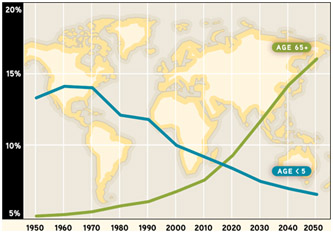
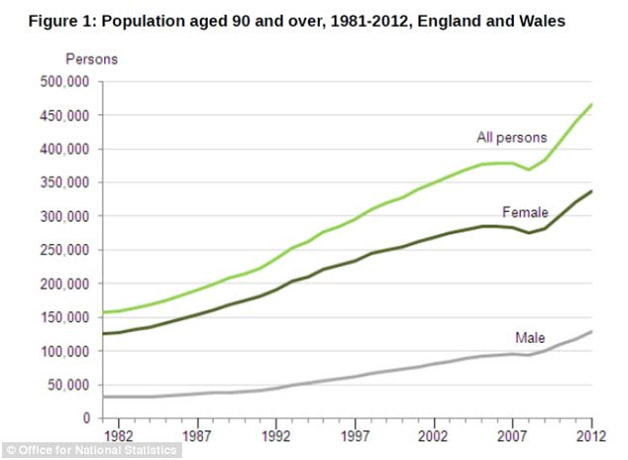
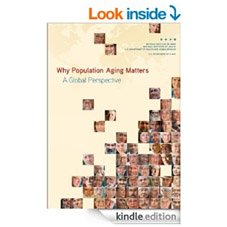
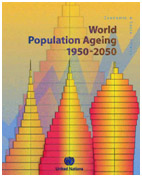
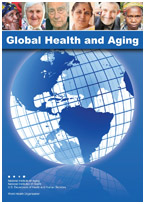
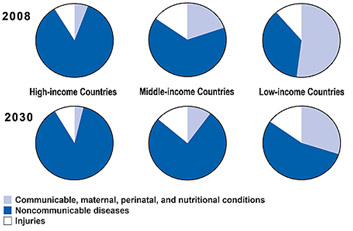
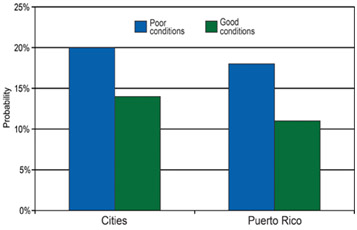
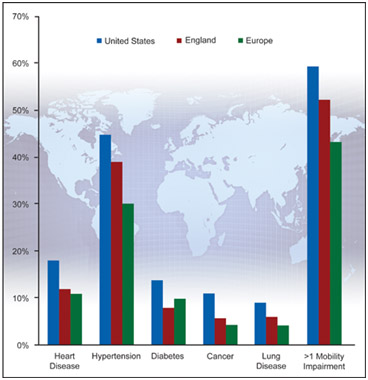

Pingback: ON AGING - AGINGSCIENCES™ - Anti-Aging Firewalls™AGINGSCIENCES™ – Anti-Aging Firewalls™
Pingback: The evolving narrative and social transformation of aging – Part 3: major initiatives and activities that are reflecting and driving the changes in narratives of aging - AGINGSCIENCES™ - Anti-Aging Firewalls™AGINGSCIENCES™ – Anti-Aging Firew